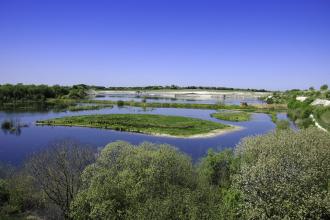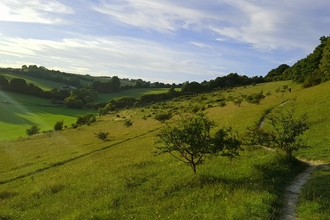I'm often asked why are we starting to cut more of the young dogwood scrub in the summer.
Over the last 10 years, it has become very apparent that cutting large blocks of dogwood on our chalk grassland sites during the winter months has ultimately caused us more of a headache.
Winter cutting has been shown to cause the dogwood to sucker and rather than reducing the levels of dogwood cover, it has, in many circumstances, led to greater problems. It has smothered and outcompeted many of the finer and more uncommon flowering plants that are found on these sites.
As such, over the last few years there has been much more activity out on many of our Chilterns chalk grassland sites in summer months. Mature scrub that was cut the previous winter is being recut once, or maybe even twice, during the period of time when this plant is putting on the most growth.
Prior to mowing taking place areas to be cut are checked for any ground nesting birds. The young scrub is then cut using brush-cutters or our alpine tractor and mower. Where possible all cut material will be raked from the work area to try to minimise nutrient enrichment of the soils.
This change in our management can however be seen by some as just being inappropriately timed work, as there will always be some collateral damage, with flowering plants being cut during this process. However, the timings have been shown to be incredibly important, with cutting in June or July being most effective at reducing the vigour of this invasive shrub.
When this is carried out over a period of several years, this method is showing really positive signs, with flowering plants now dominating areas that were once dense stands of dogwood.
With the future effects of climate change predicted to give us longer growing seasons and more vigorous growth for species such as dogwood, it is essential that we adapt our management to ensure that we are able to maintain the species rich grasslands that many of our Chilterns nature reserves are so well known for.







